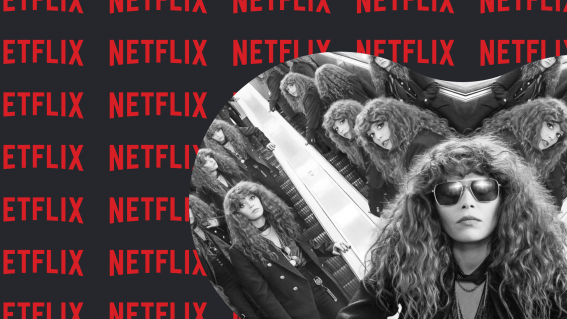The 50 best blockbuster movies so far this century
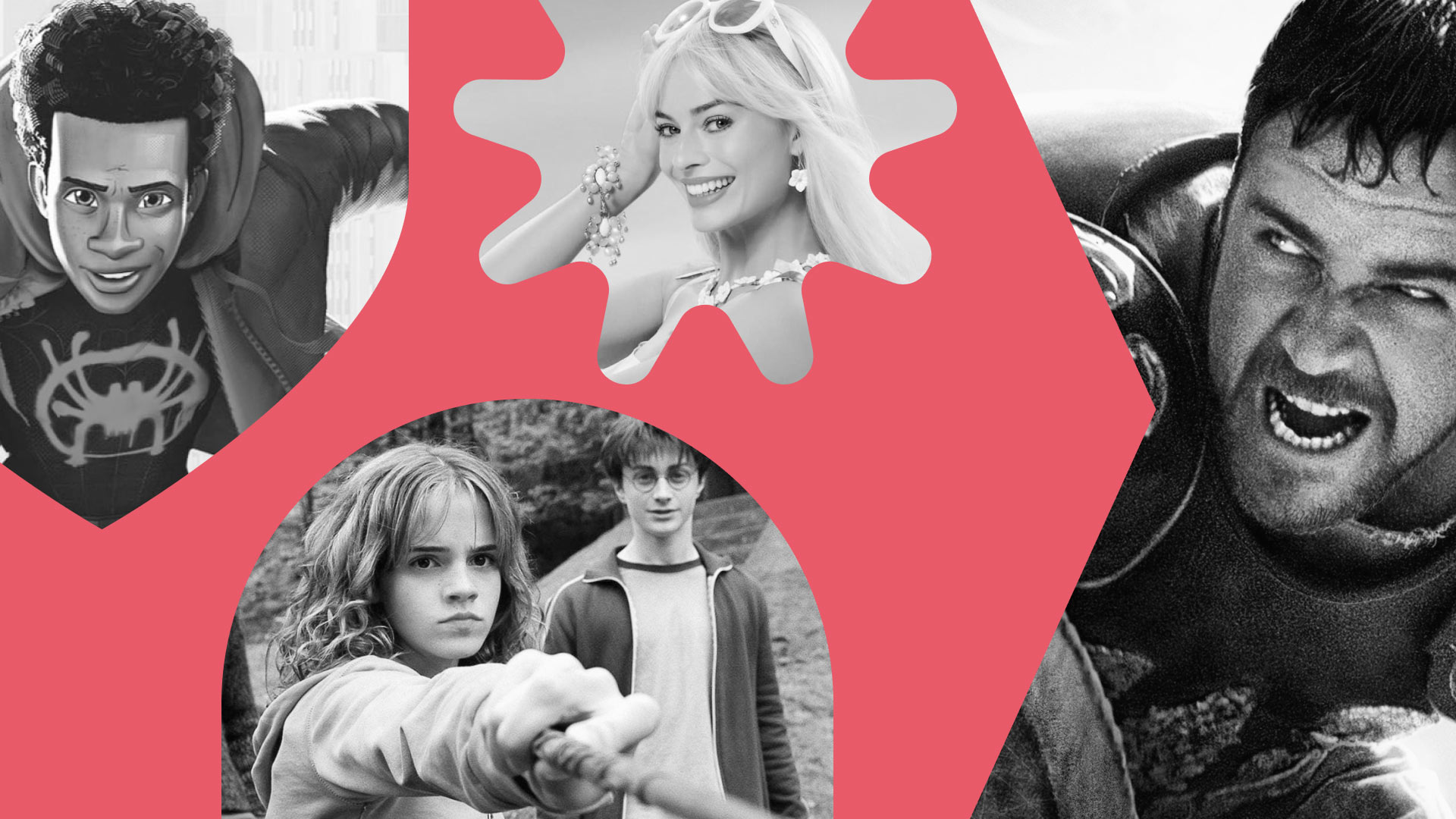
When we hear the word “blockbuster” we think “big.” Big budget, big stars, big spectacle. For the purpose of this guide, we need to be a tad more specific: here a blockbuster is defined as a movie with a production budget north of US$70 million (with most titles below costing much more).
This list, compiled by Luke Buckmaster and occasionally updated when great new blockbusters arrive, only includes productions entirely or partly financed by Hollywood—for better or worse, the mecca of blockbuster moviemaking. They sure do make ’em big.

A.I.: Artificial Intelligence (2001)
Steven Spielberg’s 2001 masterpiece—the director’s best post-millennium film by a long shot—reworks Pinocchio, swapping out a wooden puppet for a robot (or “mecha child”). The philosophical questions expand accordingly, hinged not on the pseudo boy’s longing to be human but the bold question of what obligation humans have to their creations. It’s courageously humane, rooted in a kind of cosmic existential longing.

Ad Astra (2019)
It’s OK to have daddy issues…even while floating around in space. Director James Gray uses the vastness of the cosmos as aesthetic and psychological scaffolding for an outerplanetary therapy session in which Brad Pitt’s glum astronaunt is tasked with looking for his lost father, dropping the kind of forlorn dialogue we don’t usually hear in blockbusters—like “I’m looking forward to the day my solitude ends.”

Assassin’s Creed (2016)
Assassin's Creed
Justin Kurzel’s adaptation of the blockbuster video game franchise is an intensely sombre work that never condescends to viewers. A rich painterly look brings flair to a dense narrative following Michael Fassbender as he inhabits the body of an assassin circa 15th century Spain. Kurzel flips expectations, delivering a video game movie with too much rather than too little plot, crediting the audience with too much rather than too little intelligence.
![]()
Avatar (2009)
James Cameron’s uber glossy visual feast featuring lanky blue aliens and their lush rainforest home isn’t all surface, commenting on the environment-destroying havoc of extreme capitalism and its pernicious influence on Indigenous communities. It’s also an interesting take on virtuality and post-human embodiment, with Sam Worthington’s disabled former marine finding a second life as an honorary Na’vi.

Barbie (2023)
A life-sized Barbie box is a symbol of oppression in Greta Gerwig’s wild and weird feministic statement. Margot Robbie’s protagonist embarks on a reverse Wizard of Oz trajectory, exiting a bizarro world to leave the matriarchy for the patriarchy. Barbie‘s massive success should remind Hollywood that contemporary blockbusters can still be political and provocative—not that studio bigwigs will want to put that to the test.

Black Panther (2018)
Black Panther
“They knew death was better than bondage,” says Michael B. Jordan’s Erik Killmonger, reflecting on the decision of his ancestors to jump from ships to avoid capture. That’s quite a line for a Marvel movie. Black Panther is loaded with bling and bombast but finds a degree of ingenuity by staging fight scenes as more like dances than punch-ons: moments of exotic rhythm and physicality.

Blade Runner 2049 (2017)
Blade Runner 2049
Making a sequel to one of the most influential sci-fi movies is a piece of piss, said nobody ever. Denis Villeneuve succeeded magnificently with his deep, downcast, Roger Deakins-shot sequel to Ridley Scott’s rain-clogged classic. Ryan Gosling plays a replicant guiding us through a future that’s bleak and biblical, in a ghost-in-the-machine sort of way.

The Bourne Ultimatum (2007)
The Bourne Ultimatum
Paul Greengrass’ crowning achievement in the Bourne movies is the continuation of his signature style, his auteurism, even when budgets crossed into nine digits. His woozy camerawork and vérité angles seem to get inside, or be projected from, the mind of his protagonist—an amnesia-afflicted former CIA assassin trying to find out Who He Really Is. By Ultimatum, the third Bourne movie, the formula had been well refined, the sting never sharper.

The Call of the Wild (2020)
The Call of the Wild (2020)
An old-timey adventure that wears its novelistic lineage on its sleeve, Chris Sanders’ adaptation of Jack London’s classic book charts the life of a very good boy: a huge St. Bernard-Scotch Collie named Buck, brought to life through CGI and motion capture. This technology doesn’t inhibit the film’s appreciation of the natural world nor its capacity for wonder, matching magnificent outdoorsy images with an intimate narrative given extra extra pathos by old mate Harrison Ford.
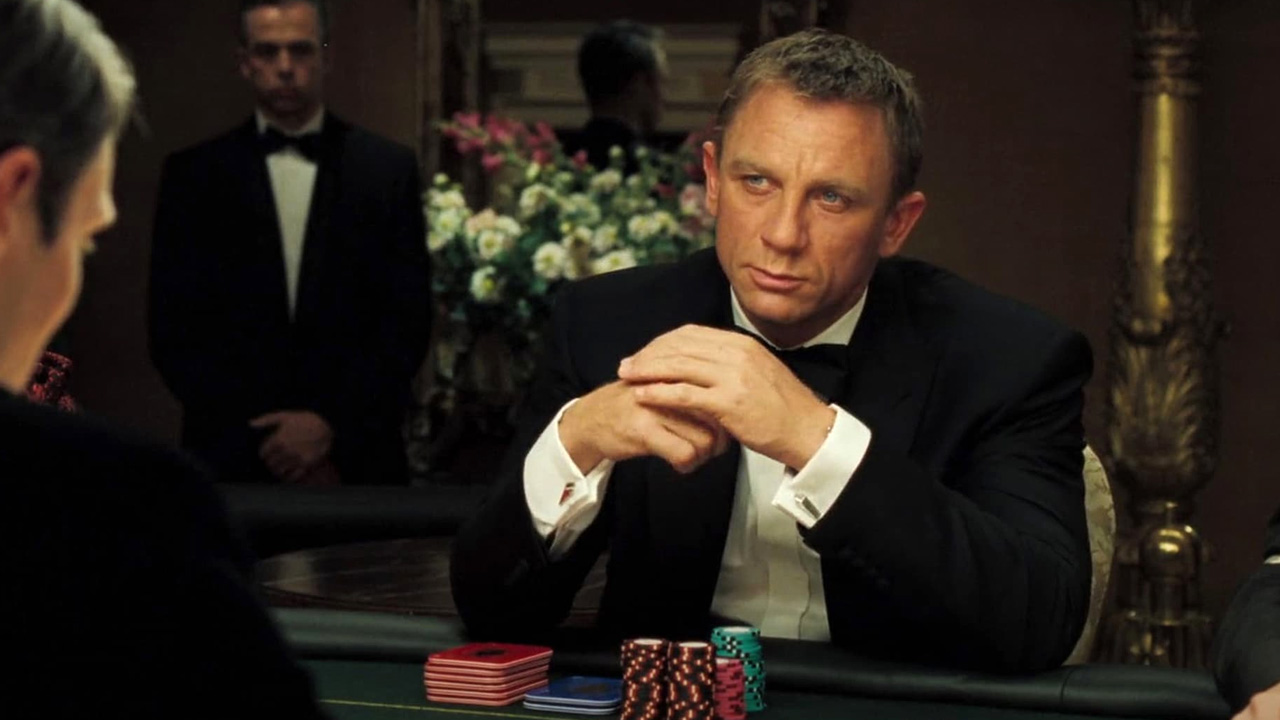
Casino Royale (2006)
Casino Royale (2006)
Director Martin Campbell’s introduction of a gritty tone changed the fabric of the James Bond franchise and premiered Daniel Craig as a stony-hearted 007, flashing death glares a-plenty. The action—large in scale, short of breath—builds towards a conceptually simplistic but high impact focus point: a poker game in which our hero faces off against Mads Mikkelsen’s terrorist-financing villain Le Chiffre.

Children of Men (2006)
Children Of Men
In Alfonso Cuarón’s dystopian masterpiece humans have become infertile; refugees are locked up like animals; random citizens are whisked off to the gulag. Followed by Emmanuel Lubezki’s brilliantly daring camera work, Clive Owen’s rumpled antihero forges a narrative pathway through the noise and stink, leading a story about holding onto hope in a woebegone world.

Cloud Atlas (2012)
Cloud Atlas
Bloodly long, bloody ostentatious, scrambled as all get-out. The bamboozling aspects of the Wachowski sisters’ collage-like epic are overshadowed by its extraordinary ambition. Cross-cutting between six stories taking place between 1849 and 2346, the cast are handed an eclectic array of characters and scenarios, Tom Hanks for instance playing six parts—including a post-apocalyptic tribesman and a cockney goon in contemporary London.

The Curious Case of Benjamin Button (2008)
The Curious Case of Benjamin Button
David Fincher’s densely novelistic “cradle to the grave” epic is extensively narrated by Brad Pitt, who plays a man ageing in reverse: born old, dying an infant. A hell of a challenge for the makeup and special effects department. As striking as that central gimmick is, it’s the richness and detail of the story that truly impresses.

The Dark Knight (2008)
The Dark Knight
The greatest special effect in Christopher Nolan’s Batman sequel is Heath Ledger and his amazingly theatrical interpretation of the Joker. Ledger really gets the film smoking: every appearance is high voltage, every scene electrifies. “I’m not a monster,” he says. “I’m just ahead of the curve.” Like other middle-trilogy classics, a la The Empire Strikes Back, The Dark Knight has no beginning or end—but as a collection of scenes it’s one hell of a showcase.

The Dark Knight Rises (2012)
The Dark Knight Rises
Tom Hardy’s boulder-like villain Bane is an insane combination of anarchist, Marxist and misanthrope. I appreciate that this film’s first set piece takes place mid-flight, Bane doing terrible things tens of thousands of feet in the air, literalising an overarching feeling—that something high is going to come down. The air in The Dark Knight Rises is choked, tortured, combustible. Like the devil has reality in a chokehold.

The Departed (2006)
The Departed
A Martin Scorsese movie with Jack Nicholson as lead gangster is a match made in heaven—or maybe, a match made in the other place. Leonardo DiCaprio and Matt Damon are also superb as two cops, one straight and the other crooked, spearheading a twisty plot (remaking Infernal Affairs) that’s consummately directed. Scorsese has mastered the gangster genre.
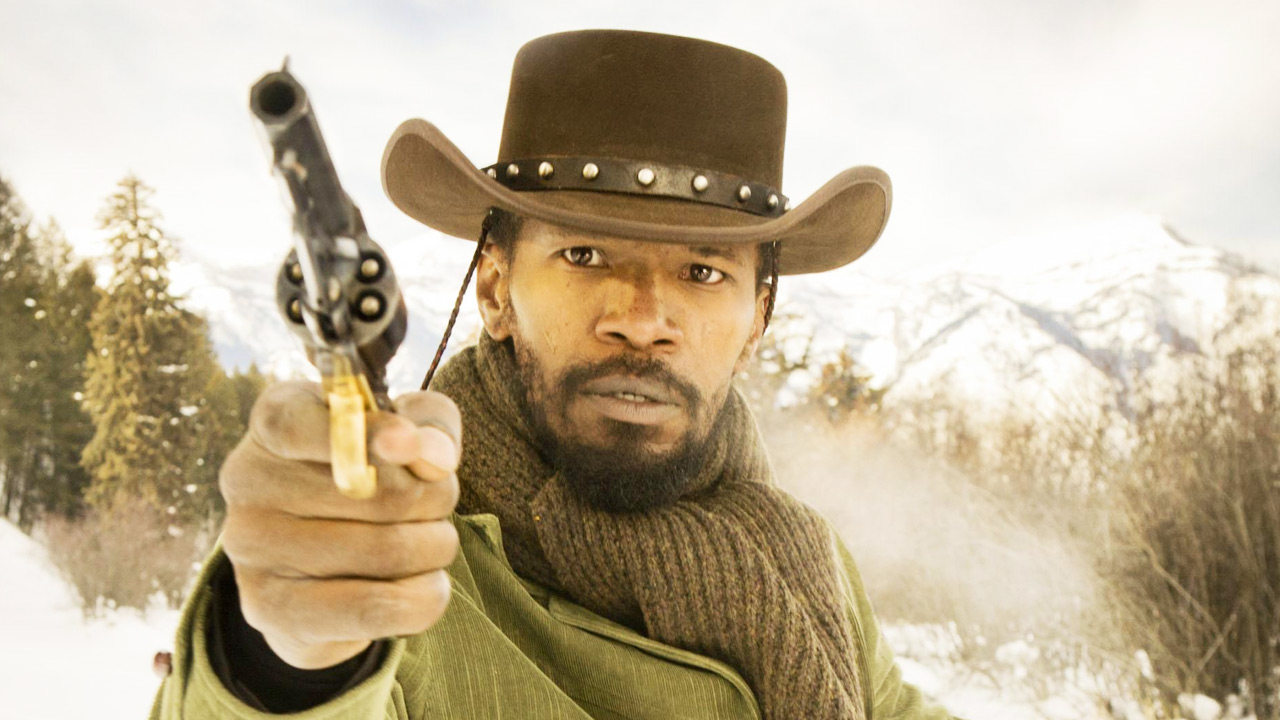
Django Unchained (2012)
Quentin Tarantino’s balls-to-the-wall homage to the genre of stirrups and six shooters hinges on a simple premise: what if the hero of an action-packed western were Black? Jamie Foxx pursues bloodthirsty revenge as a Deep South slave set free, in a film that couples pulpy QT-isms with scolding allegory about entrenched racism in America.
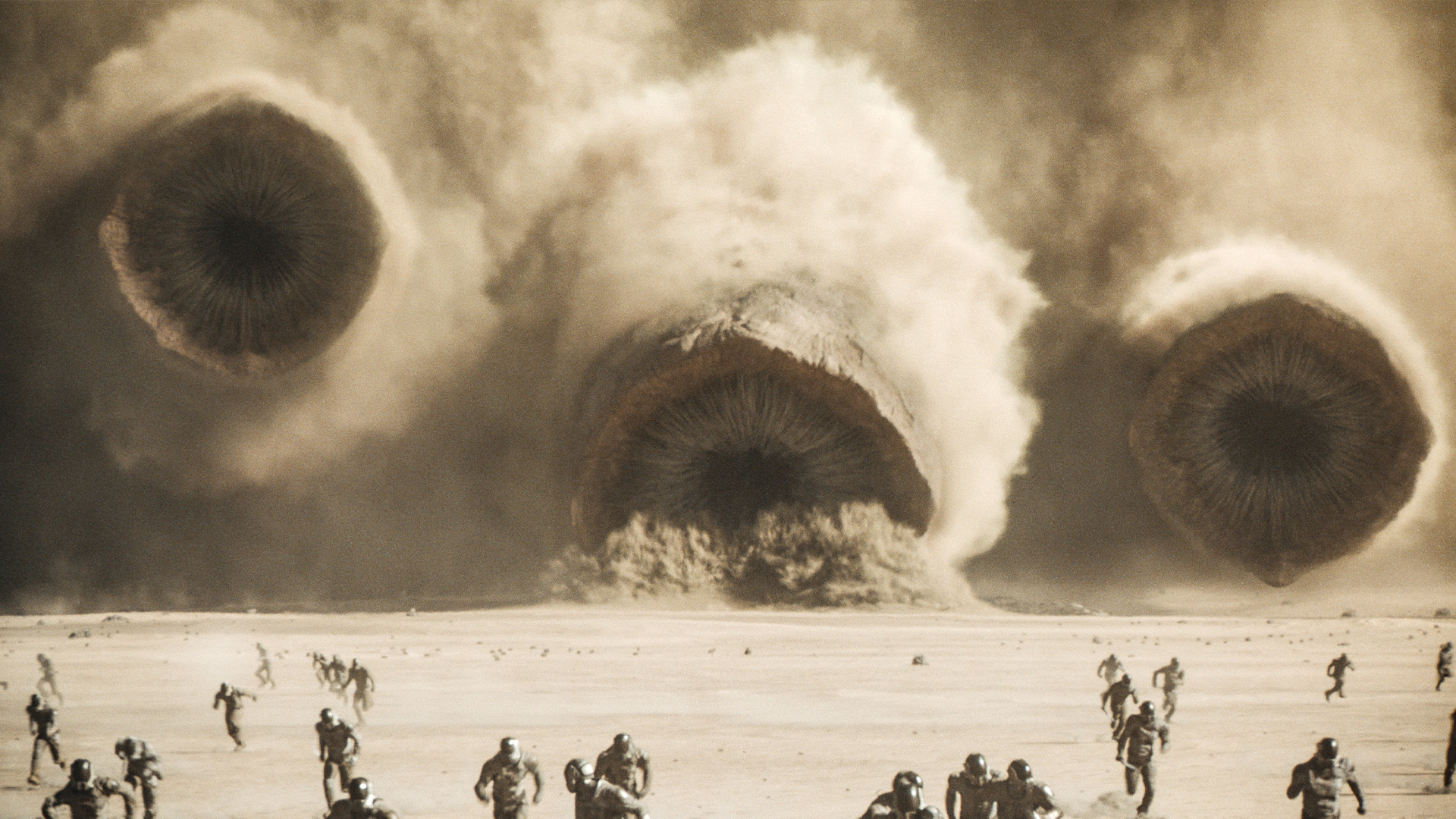
Dune: Part Two (2023)
Denis Villeneuve’s first Dune movie did a lot of the heavy lifting, plot and context wise, which of course the second capitalises on—resolving long plot threads and delivering a mighty roar of screen-buckling spectacle. It’s a blockbuster as big as they come, but Villeneuve maintains the ability to surprise, for instance staging a key battle scene in silky black and white.

Edge of Tomorrow (2014)
Edge of Tomorrow
Tom Cruise plays an alien-fighting US soldier who cannot die and experiences the same day over and over, Groundhog Day style, in Doug Liman’s rootin’-tootin’ video-game-esque sci-fi. The fight/die/repeat format keeps a ferocious pace and doubles as a commentary on the infallibility of the Hollywood hero.

Gladiator (2000)
Gladiator (2000)
The roar of the crowd in Ridley Scott’s hell-unleashing swords and sandals epic isn’t just the sound of people clamouring for spectacle, but a throughline to the film’s core message: about wielding power by winning over the masses. A mustily styled, worn-in look gives the clanging steel and spurting blood a credible veneer, and a pacey momentum compensates for a very chunky running time.

Gravity (2013)
The staging is audacious, opening with a 12-and-a-half minute shot that drifts through space, unburdened by the titular force, settling on two astronauts (Sandra Bullock and George Clooney) performing maintenance on a shuttle. When disaster strikes and the shuttle is destroyed, director Alfonso Cuarón launches a breathless survival narrative sustained with gooseflesh-raising tension.

Harry Potter and the Prisoner of Azkaban (2004)
Harry Potter and the Prisoner of Azkaban
All the Harry Potter movies have impressive production design but this one takes their darkly magical aura to another level. Alfonso Cuarón changed the franchise’s look and feel, to some degree making it his own. Gary Oldman’s baddie Sirius Black properly enters the scene 90 minutes in, but he’s more interesting before he arrives—as an intangible presence, casting a shadow over the drama.

Hellboy II: The Golden Army (2008)
Hellboy II: The Golden Army
Guillermo del Toro’s most imaginative production marks the second performance from Ron Perlman as a buff, tomato-red half-demon raised as a superhero to fight for humanity. This is a film that cares about its creations, even ones cursed to die in service of spectacle—such as a massive, plant-like, city-destroying monster that prompts a conversation about ephemeral beauty (“you destroy it, the world will never see its life again”).

Hugo (2011)
This is Martin Scorsese’s equivalent of Cinema Paradiso: a grand, majestically staged love letter to motion pictures, fictionalising the life of the great pioneer Georges Méliès (Ben Kinglsey). The eponymous character lives in the roof of a train station, where he works winding a gigantic clock, its gears and cogwheels captured in wonderfully explorative camerawork.

The Hunger Games: Catching Fire (2013)
The Hunger Games: Catching Fire
The second Hunger Games movie evokes a thoroughly menaced tone: the world is broken; people are pushing back; revolution is in the air. Despair and cynicism infuse everything—even the relationship between Jennifer Lawrence’s Katniss and Josh Hutcherson’s Peeta, who are used as propaganda tools by the state. They’re sent back into the death tournament arena, where Katniss rises from celebrity contestant to mythical saviour.
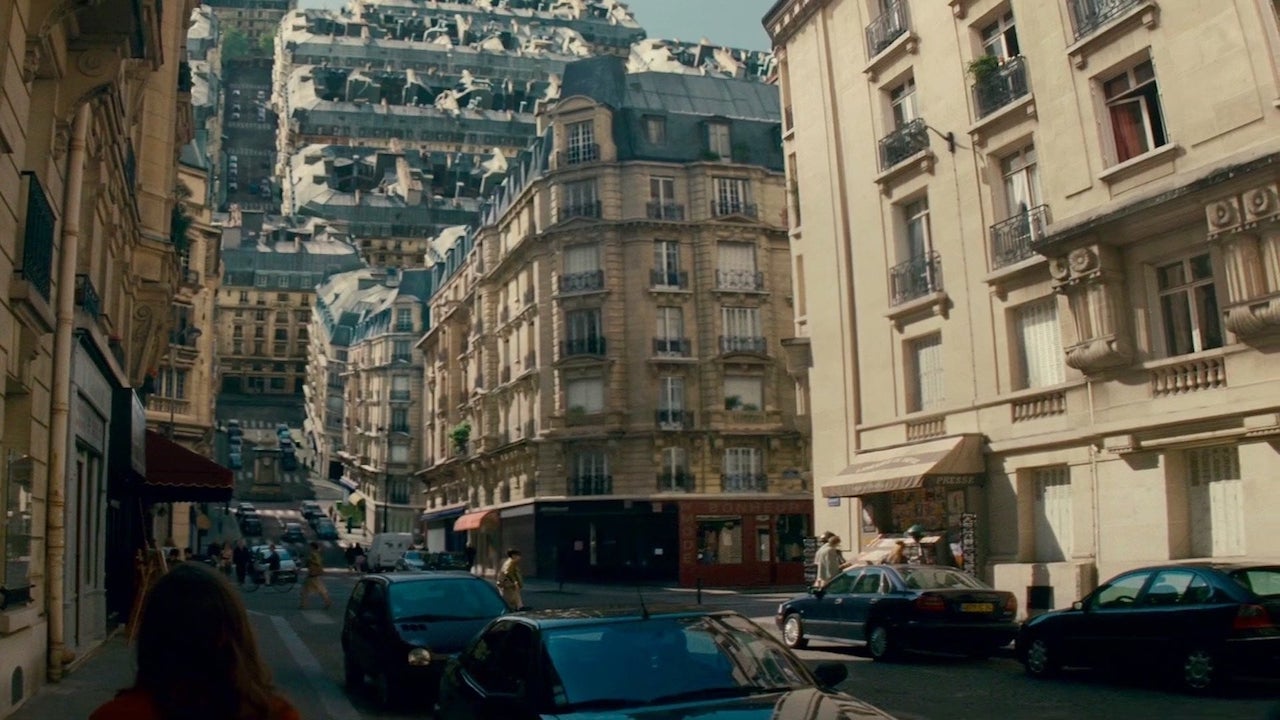
Inception (2010)
Christopher Nolan’s magnum opus imagines video game concepts such as worldbuilding and level design as matters of the mind, giving Elliot Page’s architecture student Ariadne the mother of all gigs: to “build cathedrals, entire cities, things that never existed, things that couldn’t exist in the real world.” Ariadne’s recruitment prompts a special effects showcase (the famous city bending scene) that feels totally germane to the story. No other heist film is quite like it, nor any film about dreams.

The Incredibles (2004)
The Incredibles
The highwater mark of this film’s revisionist wit and cynicism is a single line of dialogue. A formerly suicidal man yells at Mr Incredible: “you didn’t save my life, you ruined my death.” The script has it both ways, indulging and satirising superhero lore via a “band back together” narrative rooted in family dynamic. It’s fast, funny, clever.

Inglourious Basterds (2009)
Quentin Tarantino’s bizarro WWII film begins with vintage monologues from Christoph Waltz and culminates with an explode-a-palooza of historical revisionism, the cinema itself now the place of Adolf Hitler’s demise. QT’s penchant for pop art cinephilia is on full delirious display, sprucing up a stop-start narrative about—as Brad Pitt so eloquently puts it—”killin’ Nazis.”

The Irishman (2019)
Lengthy tracking shots, vintage R&B and doo-wop, extensive voice-over, sudden bursts of violence, a rise-and-fall narrative, Robert DeNiro and Joe Pesci as made men with scores to settle—ah yes, a Martin Scorsese gangster movie. Nobody does this genre better; nobody comes close. It’s a shame the de-aging technology looks a bit naff, though the many strengths of The Irishman—which paints a collage-like picture of the life of DeNiro’s titular hitman—overpower it.

John Carter (2012)
John Carter
Director Andrew Stanton’s sweeping intergalactic epic adapts Edgar Rice Burrough’s legendary sci-fi story. It’s thrillingly grand and stagey, with a constant air of unpredictability: a Saturday matinee concoction of gladiatorial spectacle that jumps the astral plane from American Civil War to space epic. The titular hero gets tossed between battles and revolutions, embroiled in a theatre of war as never-ending as the cosmos.

The Jungle Book (2016)
The Jungle Book (2016)
Jon Favreau’s retelling of Rudyard Kipling’s famous book anthropomorphises animals, but is also genuinely interested in using them to consider different ways of living, different kinds of consciousness. Magical moments occupy spaces that feel neither quintessentially human nor animal. And this reflects the plight of the protagonist—a boy, Neel Sethi’s Mowgli, who is raised as a wolf. Look out for a CGI-slathered Christopher Walken as the orangutan-like King Louie, performing “I Wanna Be Like You”.

Logan (2017)
This film feasts on the haggard over-the-hill superhero trope, really taking it to extremes. The primary cast, including Hugh Jackman’s Logan (AKA Wolverine) and Patrick Stewart’s Professor X, look fed up, feeble, diseased, on death’s door. And this indeed is a film about death, brutally determined to peel away the aura of superhero invincibility.

The Lord of the Rings: The Return of the King (2003)
The Lord of the Rings: The Return of the King
The third instalment of Peter Jackson’s dizzying Lord of the Rings trilogy is where the shit really goes down, delivering moments of screen-crunching spectacle that bring to a head tonnes of plotlines and backstories. But this choice represents all three films, which are magnificent as a set but flawed in different ways: the first has a lagging setup; the second doesn’t have an ending; the finale has about a dozen.
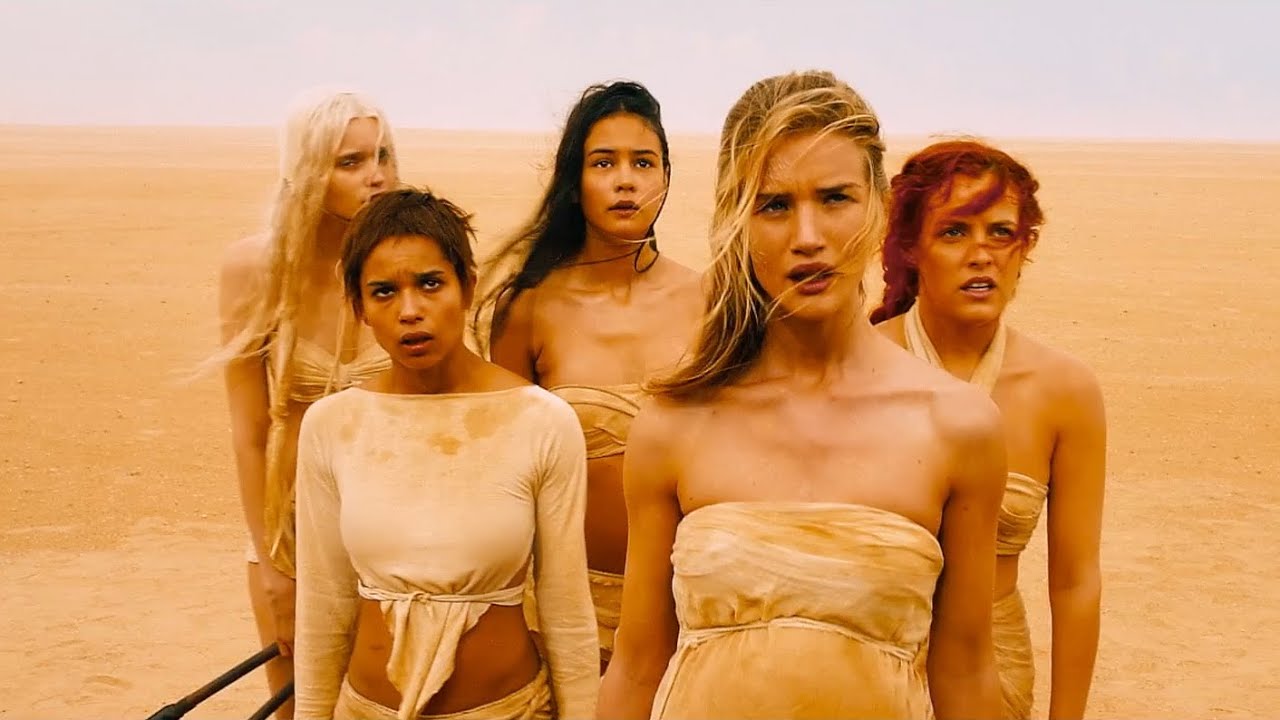
Mad Max: Fury Road (2015)
Mad Max: Fury Road
The pace of George Miller’s third Mad Max sequel is beyond frenetic: this sonic-speed symphony of combustion roars out of the gates and never slows down. Tom Hardy defies expectations, bringing a revitalised Max Rockatanksy into the 21st century. But Charlize Theron steals the show as Imperator Furiosa.

Minority Report (2001)
Minority Report
Is it morally right to arrest a murderer before they’ve committed the crime? Tom Cruise’s “precrime” chief passionately says yes—before footage emerges of himself as a yet-to-be killer. The blood in Spielberg’s metallic-looking sci-fi really starts flowing when Cruise goes on the run, and, as you do, nabs a bathtub-dwelling clairvoyant to help clear his name.

Mission: Impossible – Dead Reckoning Part One (2023)
It might not have an ending (yet) but it has a bloody great villain: an invasive and all-pervading AI program capable of controlling the very concept of truth. So it’s Ethan Hunt (Tom Cruise) versus the collapse of consensus reality, in a cracking ride with terrifically executed set pieces—including a showdown in an airport and a finale on board a steam train that, naturally, is accessible only via death-defying stunts.

Prometheus (2012)
Prometheus
Ridley Scott’s return to the in-space-nobody-can-hear-you-scream genre he helped create aims a lot higher than Alien. Following a crew of explorers tasked with the rather sizeable brief of discovering the origins of human existence, this is a mega-budget meditation on life, the universe, and everything, underscored with a profound sense of yearning.

The Revenant (2015)
The Revenant
Leonardo DiCaprio has never copped it harder than in Alejandro González Iñárritu’s neo-western survival flick: he’s beaten, slashed, shot, mauled, frozen, buried alive, flung off a cliff…and that’s just the first 30 minutes. Emmanuel Lubezki’s strikingly immersive camera work follows poor Leo in close proximity, as he embarks on quest for revenge against rotten old Tom Hardy, slogging his way through American wilderness circa 1823,

Rise of the Planet of the Apes (2011)
Rise of the Planet of the Apes
Any of the 21st century Planet of the Apes movies (other than the Tim Burton one) could’ve made this list; this inclusion represents all three of these extraordinary achievements. It’s remarkable how quickly we accept the reality of this world, how much it resonates, how plausible it feels. Perhaps we’re looking into aspects of our own imagined past. Rise of the Planet of the Apes begins in a volatile space, confrontation looming between humans and apes but full-on war yet to break out.

Speed Racer (2008)
Speed Racer
The Wachowski sisters’ candy-coloured manga adaptation is in a constant state of visual flux: every scene, every backdrop, every transition is an opportunity for invention. The action doesn’t unfold, it explodes, bits of over-ripe bling flying everywhere. Emile Hirsch’s clean-cut protagonist is an amazingly gifted racer fanging it to glory in a face-melting, Mario Kart-esque league ravaged by corporate corruption.

Spider-Man 2 (2004)
Sam Raimi’s mid-trilogy film feels more picture book than comic book, featuring camerawork that explores set pieces rather than pulverises them in the editing room. Tobey Maguire’s Peter Parker/Spider-Man grapples with his usual challenges i.e. balancing superheroism with his love life, earning a crust as a photographer, and taking down difficult villains—here Alfred Molina’s Doctor Octopus. Their showdown on top of a NYC subway train is a banger.
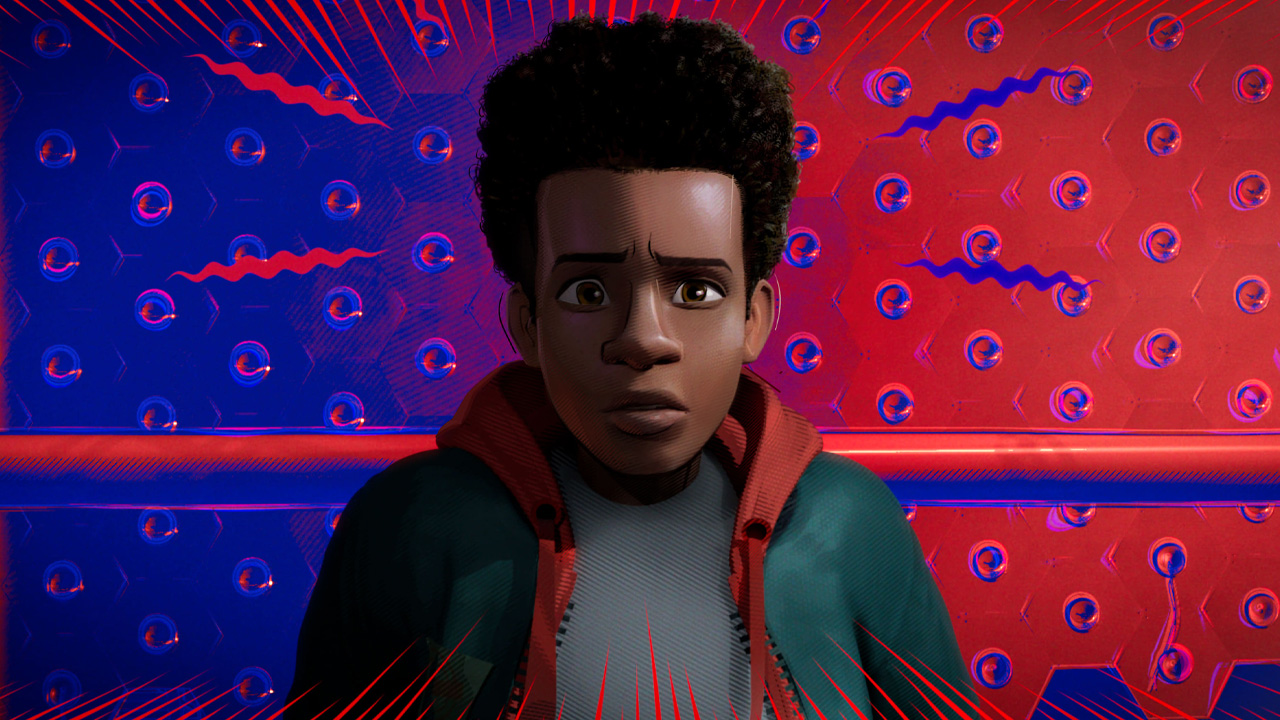
Spider-Man: Into the Spider-Verse (2018)
Spider-Man: Into the Spider-Verse
Not an origins film, but a film about the myth of origins. This restlessly inventive visual cocktail depicts a multiverse of realities, each harbouring a different version of the titular superhero—and each painted with a distinct aesthetic. The adhesive binding these universes together is the eponymous web-slinger, who saves the world from a super-gangster with a little help from his friends (who are actually different versions of himself).

Top Gun: Maverick (2022)
Part of the appeal of Tom Cruise’s hotshot pilot Pete “Maverick” Mitchell aligns with the appeal of Cruise himself: he’s a titan from another era, still standing in a rapidly changing world. An air of pathos lingers throughout this belated and unexpectedly excellent sequel to Tony Scott’s 80s classic.

Toy Story 3 (2010)
Toy Story 3
Andy, a child in the first two Toy Story movies, is a young man in the third, his once-beloved Woody and Buzz ending up in daycare before they locate, after some rather stressful experiences, a more accommodating new home. Pixar’s most famous franchise expresses the divine imaginative potential of commodified playthings, and acknowledges their roots in mass consumption.

Unbreakable (2000)
Unbreakable (2000)
M. Night Shyalaman ingeniously infuses comic book lore into the drama and ideology of his moodily sculpted superhero-movie-with-a-difference. Bruce Willis’ security guard discovers he can’t be hurt—and Samuel L. Jackson’s comic collector recognises his own place in the yin and yang of superhero mythology. Old mate Shyamalan loves his twist endings, and this one is a doozie, casting new light on what was in front of us all along.
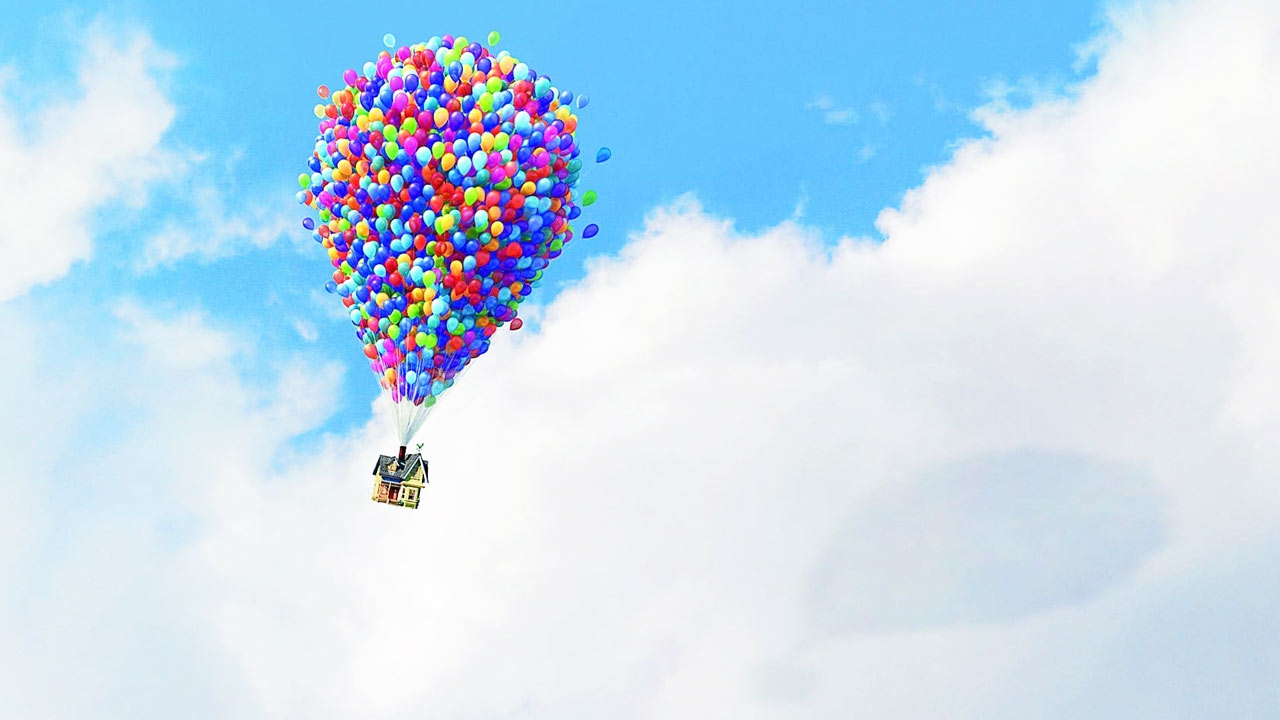
Up (2009)
The exquisite dialogue-free opening scene of Up condenses a lifelong romantic relationship between two soulmates, Carl and Ellie, culminating with the latter’s death. Yes, something got caught in my eye. Resting on the familiar dynamic between curmudgeonly old man and cheerful, rambunctious child, the rest of the film doesn’t reach that initial emotional impact, but it’s heartwarming and sometimes delightful.

Watchmen (2009)
Zack Snyder’s terrific adaptation of the seminal graphic novel contains the best opener of any superhero movie: an exhilarating five-and-a-half-minute montage set to the tune of :The Times They Are A-Changin’”. Former superheroes are mysteriously dropping dead and this, of course, is linked to a diabolical plot to take over the world.

WALL-E (2008)
The titular robot in WALL-E is super cute—with sad, bulbous, binoculars-like eyes. But the people are fat schlubs, whizzing around on flying machines. The sight of rusty old WALL-E making towers out of trash humans have left behind on a ruined earth establishes the poignant tone of this big thinking, big feeling movie.

Where the Wild Things Are (2009)
Where the Wild Things Are
Hollywood executives recoil in horror at words like “tone poem”—but Spike Jonze got them to cough up around $100 million for his. Expanding Maurice Sendak’s children’s book of the same name, which contains just 10 sentences, Jonze brings a scratchy homemade look and a mood that doesn’t feel at all blockbustery, oozing whimsy and melancholia.

The Wolf of Wall Street (2013)
The Wolf of Wall Street
Martin Scorsese dines on tales of personal and corporate excess, not to mention outright misogyny, drawing on the debaucherous memoir of former stockbroker (and convicted criminal) Jordan Belfort. Starring Leonardo DiCaprio as Belfort and Jonah Hill as his right-hand man, hubris and hedonism is the name of the game—in a loud, fast, incongruous black comedy that runs for three frantically paced hours.
This guide is occasionally updated, when a great new blockbuster arrives. Check this page to see films that have been bumped off this list.



































































